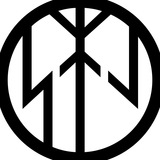Forwarded from The Chad Pastoralist: History
Media is too big
VIEW IN TELEGRAM
My new article for The Restorationist explains precisely what an Englishman is, and why the English are an ethnic group.
https://restorationist.org.uk/what-is-an-englishman/
https://restorationist.org.uk/what-is-an-englishman/
The Restorationist
What Is An Englishman?
The English ethnic group traces its origins to 5th-century Germanic migrants who integrated with native Britons. Modern genetic studies confirm English people are 25-47% Anglo-Saxon, 11-57% Iron-age Briton, and 14-43% French ancestry, first documented by…
Forwarded from Survive the Jive: All-feed
New StJ podcast! An interview with Ralph Harrison, the Director of the UK's only registered charity for those who practice the native Northern European Germanic faith, The Odinist Fellowship! This blog post includes links to 6 places you can listen to the podcast. Please be sure to subscribe on your preferred podcasting app/platform and give it a rating!
https://survivethejive.blogspot.com/2020/02/interview-with-ralph-harrison-of.html
https://survivethejive.blogspot.com/2020/02/interview-with-ralph-harrison-of.html
Blogspot
Podcast: Interview with Ralph Harrison of the Odinist Fellowship
Did you know Britain kickstarted the Bronze age?
The oldest evidence of tin ore mining in Europe is in Britain.
Around 2200 BC Britain's Beaker folk switched from using copper tools, to tin rich Bronze and the rest of Europe followed afterwards. Britain started Europe's Bronze Age.
tin-Bronze was in use earlier in Anatolia (3000 BC), and relied first on meagre local tin deposits but later on tin mines in Central Asia, but even in 2200 BC, half the metal objects in Anatolia were still just made of copper.
But later on, even West Asia switched to using British tin, and it became the main producer of tin ingots for all the Mediterranean.
You're welcome.
The oldest evidence of tin ore mining in Europe is in Britain.
Around 2200 BC Britain's Beaker folk switched from using copper tools, to tin rich Bronze and the rest of Europe followed afterwards. Britain started Europe's Bronze Age.
tin-Bronze was in use earlier in Anatolia (3000 BC), and relied first on meagre local tin deposits but later on tin mines in Central Asia, but even in 2200 BC, half the metal objects in Anatolia were still just made of copper.
But later on, even West Asia switched to using British tin, and it became the main producer of tin ingots for all the Mediterranean.
You're welcome.
Forwarded from Traditional Britain Group
Royston Museum, in an area that is 96% English 🤔
https://www.roystonmuseum.org.uk/what-s-on
https://facebook.com/events/s/anglo-saxon-day/1714376645852341/
With thanks to Bullnose in our comments for the tip-off.
https://www.roystonmuseum.org.uk/what-s-on
https://facebook.com/events/s/anglo-saxon-day/1714376645852341/
With thanks to Bullnose in our comments for the tip-off.
Details of the pressblech foils used to decorate a 7th century sword scabbard found in a male burial at Gutenstein, Baden-Wurttemberg,, Germany. It depicts a were-wolf warrior of Wotan.
This is a copy held at the Landesmuseum in Stuttgart. The original was (like many other early medieval treasures) looted by the red army from Berlin in 1945 and is now held in the Pushkin Museum, Moscow.
Photos by Matt Bunker
This is a copy held at the Landesmuseum in Stuttgart. The original was (like many other early medieval treasures) looted by the red army from Berlin in 1945 and is now held in the Pushkin Museum, Moscow.
Photos by Matt Bunker
